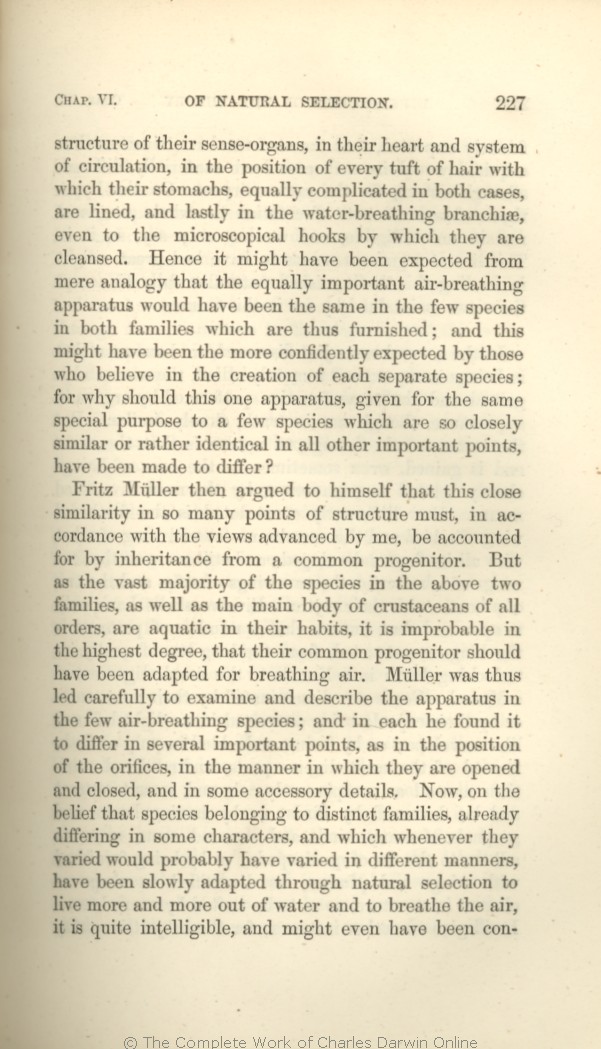their sense-organs,
in their heart and system of circulation, | in their heart and system of circulation, 1866 |
| circulating system, 1869 1872 |
| with which their stomachs, equally complicated in both cases, are lined, 1866 |
| with which their complex stomachs are lined, 1869 |
| within their complex stomachs, 1872 |
| water-breathing 1866 |
| whole structure of the water-breathing 1869 1872 |
| from mere analogy that the equally important air-breathing apparatus would have been the same 1866 |
| that the equally important air-breathing apparatus would have been the same 1869 |
| that 1872 |
| in 1866 1869 | | belonging to 1872 |
| are thus furnished; and this might 1866 |
| live on the land; and this might 1869 |
| live on the land, the equally-important air-breathing apparatus would 1872 |
| more confidently expected by those who believe in the creation of each separate species; 1866 |
| more confidently expected by those who believe in distinct creations; 1869 |
| same; 1872 |
| special 1866 1869 | special 1872 |
| purpose 1866 1869 | | purpose, 1872 |
| to a few species which are so closely similar or rather identical in all 1866 |
| to these species, have been made to differ, whilst all the 1869 |
| have been made to differ, whilst all the other important organs were closely similar or rather identical. 1872 |
| other 1866 1869 | other 1872 |
| important 1866 1869 | important 1872 |
| points, have been made to differ? 1866 |
| OMIT 1872 |
| organs are closely similar or rather identical. 1869 |
|
Fritz Müller
then
argued | argued 1866 | | argues 1869 1872 |
| to himself 1866 | to himself 1869 1872 |
| the main body of crustaceans of all orders, 1866 |
| most crustaceans of all orders, 1869 |
| most other crustaceans, 1872 |
| and describe 1866 | and describe 1869 1872 |
| in each he found it to differ in 1866 1869 |
| he found it to differ in each in 1872 |
| 3 blocks not present in 1859 1860 1861 1866; present in 1869 1872 | | Now such differences are intelligible, and might even have been anticipated,
on the supposition that species belonging to distinct families had slowly become adapted to live more and more out of water, and to breathe the air.
For these species, from belonging to distinct families, would differ
to a certain extent, and in accordance with the principle that the nature of each variation depends on two factors, viz. the nature of the organism and that of the conditions, the variability of these crustaceans
assuredly would not have been exactly the same.
Consequently natural selection would have had different materials or variations to work on, in order to arrive at the same functional result; and the structures thus acquired would almost necessarily have differed.
|
|









